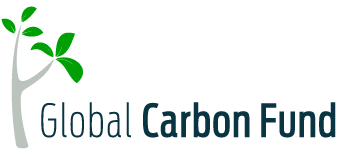Global Clean Energy Growth Surpasses Demand: Is Net-Zero 2050 Closer Than Ever?
According to BloombergNEF’s New Energy Outlook 2025, global energy-related CO₂ emissions likely peaked last year because of record growth in clean energy. They predict a a structural decline in emissions might now begin.
Let’s explore how new energy trends and policies are shaping a cleaner future.
Global Clean Energy Growth Outpaces Demand
BloombergNEF’s updated Economic Transition Scenario (ETS) shows a major shift. For the first time, clean energy additions outpaced the growth in energy demand. This could lead to a 9% drop in global energy emissions by 2030, deepening to 13% by 2035 and 22% by 2050 compared to the 2024 peak.
Solar, wind, and hydropower are driving three-quarters of the emission cuts. The rest comes from transportation electrification, fuel switching, and better energy efficiency. While clean energy demand is booming, fossil fuel demand is starting a slow but steady decline, expected to continue over the next 25 years.

Big Players: U.S., China, and Europe Behind the Change
Major economies like the United States, China, and Europe are leading the way. Countries under the Paris Agreement are preparing new climate targets for 2035, due by early 2025.
BloombergNEF notes that Australia, the EU, and South Korea would need to slash emissions by around 70% relative to earlier baselines to stay on track for a 1.5°C limit. Meanwhile, India can still grow its emissions by 27% and remain aligned with global goals.
Early movers include Brazil and the UK, both submitting 2035 targets that match net-zero ambitions. Japan’s targets fall somewhere between BloombergNEF’s base and net-zero scenarios.
Furthermore, emissions are expected to rise in Vietnam and Indonesia, while Africa and the Middle East may see emissions plateau rather than sharply decline.

US Energy Transition Progress Amid Challenges
In the United States, energy-related emissions are forecasted to fall by 16% by 2035 and 29% by 2050 compared to 2024. Power sector emissions alone could decline by 22% by 2035.
However, sectors like road transportation are complicating the outlook. Rising travel and slower-than-expected EV adoption are pushing transport emissions higher. Meanwhile, oil refining and natural gas-fired electricity are expanding in some regions.
The clean energy buildout remains strong. US wind capacity is expected to double to 321 gigawatts by 2035, and solar could triple to 692 gigawatts.

Additionally, battery storage will grow from 29GW to 175GW. Even so, wind forecasts were cut by 15% due to higher costs and project delays, while solar and battery forecasts rose by 15% and 28%. This was the outcome of lower costs and policy incentives from the Inflation Reduction Act.
There are risks ahead. New tariffs on imported solar panels and batteries could slow adoption, potentially cutting future battery installations by 27% and solar by 7% by 2050 if policies are not carefully managed.
Data Centers Driving Massive New Demand
One of the newest challenges is the exploding electricity demand from data centers, fueled by AI, cloud computing, and crypto mining. Global electricity needs are projected to rise 75% by 2050 from 2022 levels.
By 2035, data centers could consume 1,200 terawatt-hours (TWh) of electricity annually, rising to 3,700 TWh by 2050, which will be nearly 9% of total global electricity demand. And meeting this surge will require around 362GW of new power capacity by 2035.
Although most of this will come from renewables, fossil fuels could still supply about 64% of data center power by 2035 unless policies shift significantly.
Renewables and EVs Shaping the Future
Despite challenges like higher interest rates and rising costs, renewables and electric vehicles (EVs) are thriving. BloombergNEF projects that renewables will supply 67% of global electricity by 2050, up from 29% today. In contrast, fossil fuels’ share will shrink from 58% to just 25%.
Solar and wind alone will make up two-thirds of global electricity generation by 2050. In the transportation sector, annual EV sales are set to jump from 17.2 million in 2024 to 42 million by 2030.
- By 2050, two-thirds of the global passenger vehicle fleet will be electric, cutting oil demand for road transport by about 40%.
Fossil Fuels: Slow Decline Begins
Fossil fuels are not disappearing overnight but are clearly losing ground, even though the Trump government has a strong inclination towards them.
Oil demand is expected to peak around 2032 at 104 million barrels per day, before declining to 88 million barrels per day by 2050. Aviation and petrochemical sectors will drive most of the remaining oil consumption.
More significantly, coal use is forecasted to fall rapidly as it loses out to cheaper and cleaner alternatives. From now until 2035, global coal consumption drops by 25%. More precisely, it can decline by about 2% in 2025, mainly due to the drastic phasing out in China
Gas demand will stay relatively steady through 2050 but will eventually start falling as renewables expand.

This research shows that the surge in clean energy installations during 2024 may have triggered the first real, long-term decline in global emissions. Technologies like solar, wind, EVs, and improved energy efficiency are reshaping industries and creating real hope for a low-carbon future.
Challenges such as soaring data center demands, uneven sector transitions, and political uncertainty remain. However, with strong momentum behind clean energy and supportive policies, achieving net-zero emissions by 2050 is increasingly within reach. The green transition isn’t just coming, but it’s already here.
The post Global Clean Energy Growth Surpasses Demand: Is Net-Zero 2050 Closer Than Ever? appeared first on Carbon Credits.







































